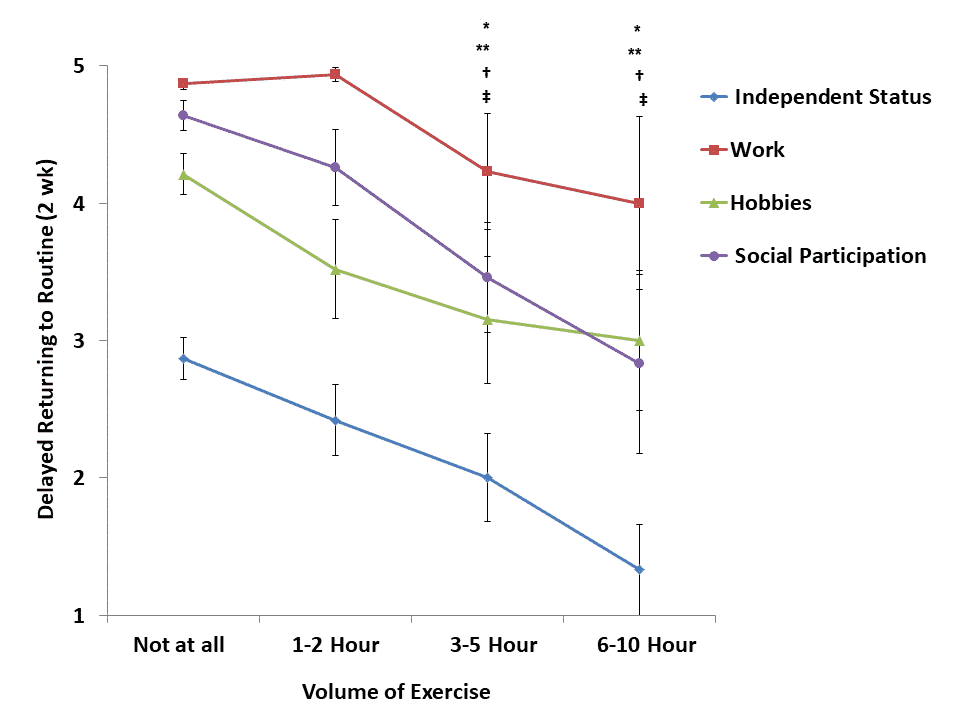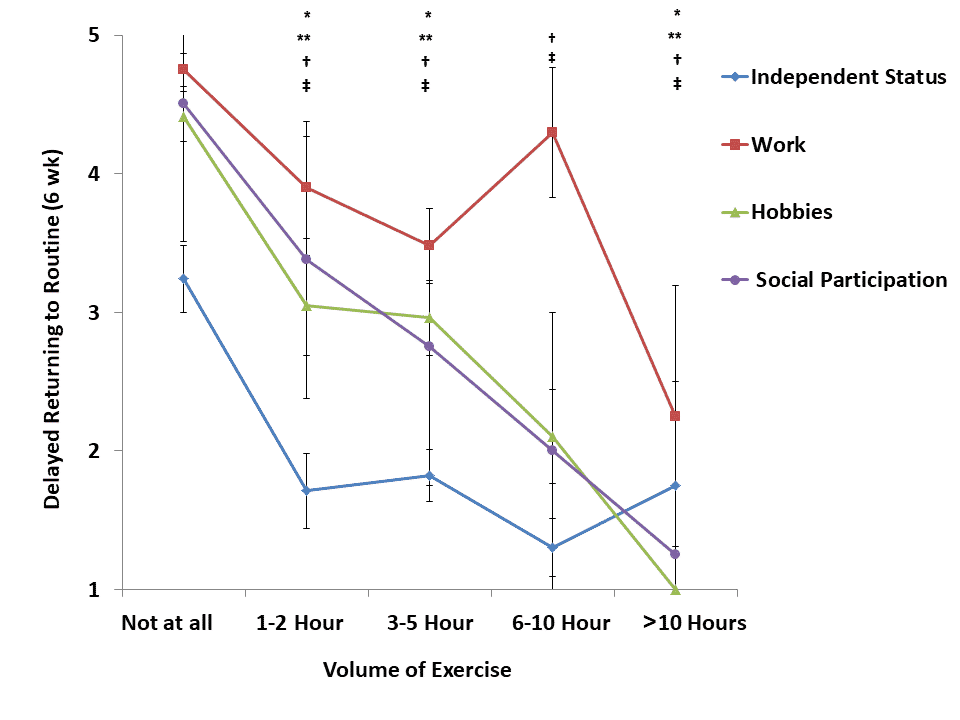
Physical Activity and Return to Routine after Cardiac Surgery
2The Ruth and Bruce Rappaport Faculty of Medicine, Technion-Israel Institute of Technology, Israel
3The Academic College at Wingate, Wingate Institute, Israel
4The Azrieli Faculty of Medicine, Bar-Ilan University, Israel
5Department of Cardiac Surgery, Sheba Medical Centre, Israel
Introduction
Return to routine and physical activity are important aspects of recovery from cardiac surgery. The purpose of this study was to examine the differences between patients with different levels of physical activity and their delay in returning to work and daily routine.
Methods
A prospective study of 100 participants was conducted to assess differences between patients with different physical activity levels. Levels were measured by volume of physical activity as None, 1-2 hours, 3-5 hours, 6-10 hours, or More than 10 hours at 2 weeks and 6 weeks post-discharge were examined. Volume of physical activity and return to daily routine were measured via questionnaires. Return to daily routine was defined as return to independent status, work, hobbies, and social participation. The scale used for return to daily routine was: (1) Regular Return; (2) Almost Returning; (3) Moderate; (4) Little; (5) Not at all.
Results
One way repeated measure analysis of variance (ANOVA) revealed that patients who had increased volume of exercise had significantly decreased delay in returning to daily routine, at 2 weeks (Independence status p< 0.004, work, p< 0.003, hobbies p< 0.014, social participation p< 0.001) and 6 weeks (Independent status p< 0.001, work, p< 0.001, hobbies p< 0.001, social participation p< 0.001), Figure 1A, 1B.
Conclusion
Patients who participate in an exercise activity are more likely to return to routine faster than patients who do not.


Powered by Eventact EMS